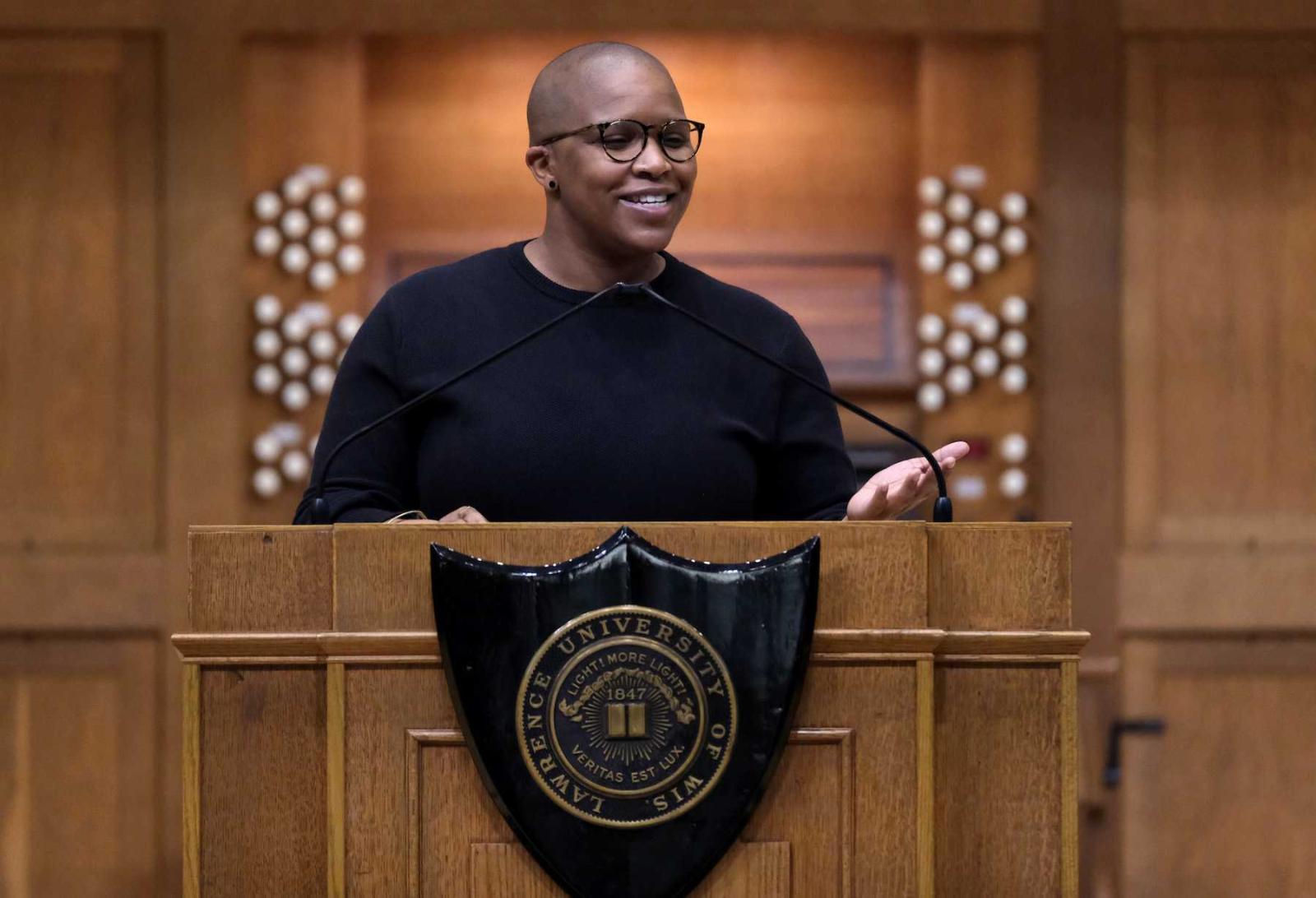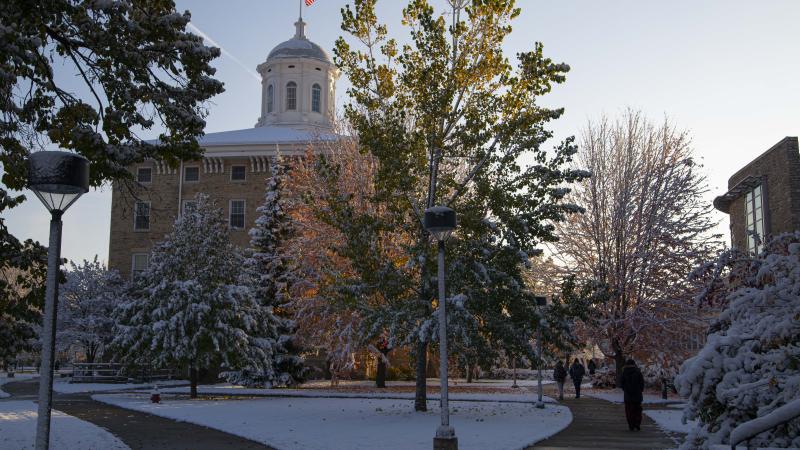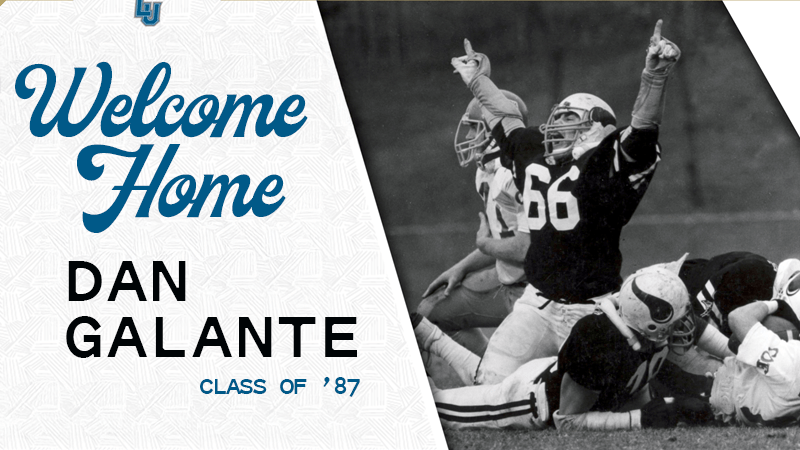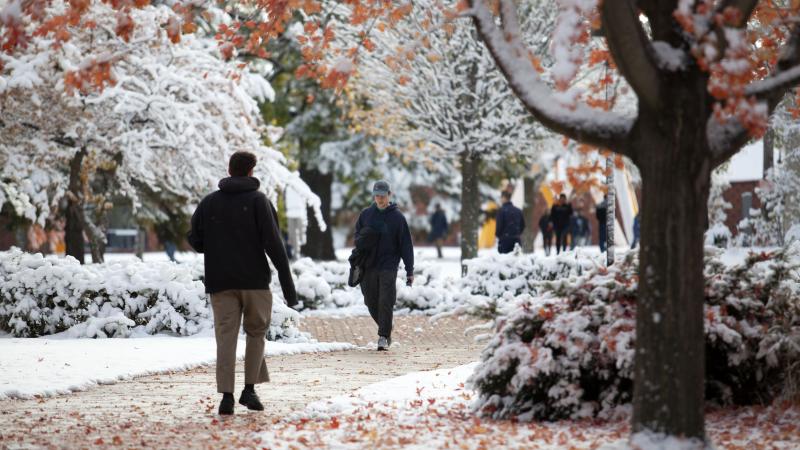Alexandra Bell is telling stories, perhaps differently than she once envisioned.
She studied journalism as a graduate student at Columbia University, on track for what she thought would be a career in journalism. But along the way her interests drifted toward art, and her eye on newspapers began to zero in how stories were being told and presented and how much of that was shaped by biases and stereotypes.
Those revelations led her in a new, creative direction. For much of the past five years, the New York-based multidisciplinary artist has used her Counternarratives art exhibits as a form of commentary on media storytelling.
“A lot of what this is about is the ways in which you can kind of disrupt dominant narratives and what it means to kind of draw from the news to tell a different story,” Bell said as she delivered the Winter Term Convocation Friday afternoon in Lawrence University’s Memorial Chapel.
Counternarratives began as a public art exhibit in 2017, her redacted pages of the New York Times hanging on walls at intersections across Brooklyn, drawing attention to how the 2014 death of Michael Brown at the hands of a police officer in Ferguson, Missouri, was covered. Her work began to draw attention to media coverage involving people of color, and the clandestine exhibit, initially hung with homemade wheatpaste, eventually brought Bell into art galleries.
Watch the Alexandra Bell Convocation address here
Some of her works are now on exhibit at Lawrence’s Wriston Art Center and will remain there through March 11.
“Her work boldly addresses urgent contemporary concerns about media and representation,” said Beth Zinsli, assistant professor of art history, curator of the Wriston Art Center Galleries, and museum studies interdisciplinary area program director.
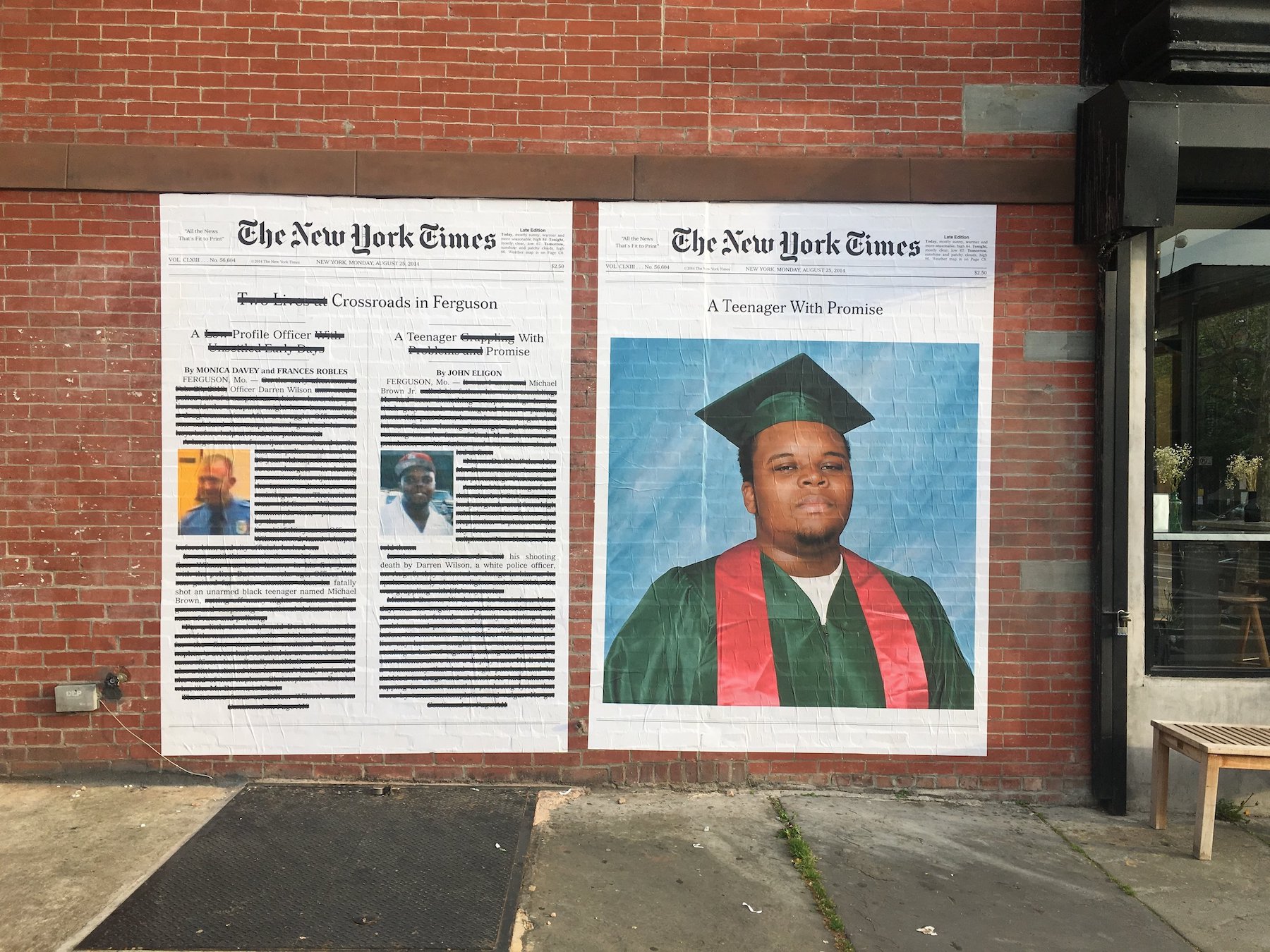
A Teenager With Promise launched Alexandra Bell’s Counternarratives in 2017.
Bell’s art does more than just point out concerns within the media, Zinsli said. It calls on all of us to think deeply about how we conduct our own business.
“Alexandra’s work serves to remind us about the need for care in the wake of violence in all its forms,” she said. “This includes the very real violence enacted against people by language, by omission, and by bias. Her work offers us insights into how to care for those whose humanity has been overlooked or discarded.”
Bell holds a bachelor’s degree in interdisciplinary studies in the humanities from the University of Chicago and a master’s degree in journalism from Columbia. It was while at Columbia that she started looking closely at news coverage from major media outlets.
Her mockups of pages from the New York Times, New York Daily News, and other media outlets have focused on stories involving police shootings, immigration, and white supremacists, among other topics. They explore language used in headlines, how newspaper layouts can redirect the emphasis, how juxtaposition of photos can do harm.
It’s not a question of inaccuracy, Bell said. The stories are factually correct. But in an attempt at balance, newspapers and other media often give too much weight to those in power.
“My issue here is about a false balance,” she said.
Sometimes, Bell said, both sides don’t deserve equal treatment. Does the leader of a white supremacist group really deserve to have his story told?
“There’s such a pursuit of a type of fairness that a lot of the power structures that determine how we live get flattened,” Bell said. “And we end up with these kinds of gross representations of things. It’s in the layouts and it’s in the language.”
In side-by-side stories in the New York Times, the backgrounds of Brown and Darren Wilson, the officer who shot him, were explored.
“There was a kinder portrayal of Darren Wilson, the police officer, than there was of Michael Brown,” Bell said.
That became the focal point of her first Counternarratives display. And the panels that were hung on the streets of Brooklyn brought mixed reactions at first. But momentum began to build.
“Some people thought it was a memorial, and in a way it was,” Bell said. “But there’s a point here about the way his death was treated.”
Bell said she has no desire to work for a newspaper. And, yes, she’s visited with editors at the New York Times several times since her art work began getting noticed.
Her message to the Times and other newspapers? It’s time to lean into advocacy journalism.
“Journalism that isn’t solutions-based journalism is of very little interest to me,” Bell said. “I think there is so much information coming at us that I think journalism has to have a more advocacy-based role. That is how a lot of Black newspapers have functioned. I’ve been spending a lot of time reading old Black newspapers. They were mission driven and they needed to be. They were abolitionists. I still feel like that need exists.”
